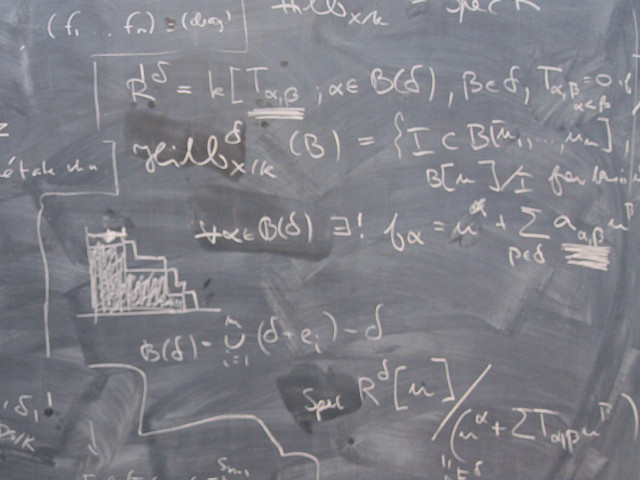Basic logic and set theory; different number fields; complex numbers; linear equation systems; matrices and matrix algebra; determinants; the matrix, vectors and vector algebra in R2 of inverse and R3; coordinate system and change of basis; inner product and cross product with geometric applications; affine reproductions; solution to over determined, under determined and sparse systems; eigenvalue problem; applications to computer graphics and image processing.
IX1303 Algebra and Geometry 7.5 credits
This course will be discontinued.
Decision to discontinue this course:
No information inserted
Information per course offering
Course offerings are missing for current or upcoming semesters.
Course syllabus as PDF
Please note: all information from the Course syllabus is available on this page in an accessible format.
Course syllabus IX1303 (Autumn 2025–)Content and learning outcomes
Course contents
Intended learning outcomes
Aim that the student should have achieved on completion of the course:
The student should be able to formulate, analyse and solve problems within algebra and geometry that are of significance within the ICT-subject area; apply and develop mathematical models within algebra and geometry by means of a mathematical programming language; critically review and comment on a given solution to a problem ; analyse how sensitive a solution is for variations in input.
On completion of the course, the student should be able to use logical symbols and formalism in set theory in a correct way in problem-solving; formulate mathematical models and solve problems where linear equation systems, matrices and determinants are included; model geometric vectors and vector algebra in R2 and R3, for example within computer graphics; carry out change of basis in orders to simplify a model; explain the relevance of eigenvalues and eigenvectors at certain applications for example rotations; solve linear equation systems (also over determined, under determined and sparse); handle vectors, matrices and determinants; solve eigenvalue problems; handle graphical objects with linear algebra especially with affine reproductions; explain how and explain why the number system is expanded to complex numbers; count with complex numbers written in different forms; model and solve problem in R2 with complex numbers.
Literature and preparations
Specific prerequisites
Recommended prerequisites
IX1304 Calculus
Literature
Examination and completion
Grading scale
Examination
- TENB - Exam, 6.0 credits, grading scale: A, B, C, D, E, FX, F
- PRO1 - Project work, 1.5 credits, grading scale: P, F
Based on recommendation from KTH’s coordinator for disabilities, the examiner will decide how to adapt an examination for students with documented disability.
The examiner may apply another examination format when re-examining individual students.
If the course is discontinued, students may request to be examined during the following two academic years.
Examiner
Ethical approach
- All members of a group are responsible for the group's work.
- In any assessment, every student shall honestly disclose any help received and sources used.
- In an oral assessment, every student shall be able to present and answer questions about the entire assignment and solution.
Further information
Course room in Canvas
Offered by
Main field of study
Education cycle
Supplementary information
In this course, the EECS code of honor applies, see: http://www.kth.se/en/eecs/utbildning/hederskodex.